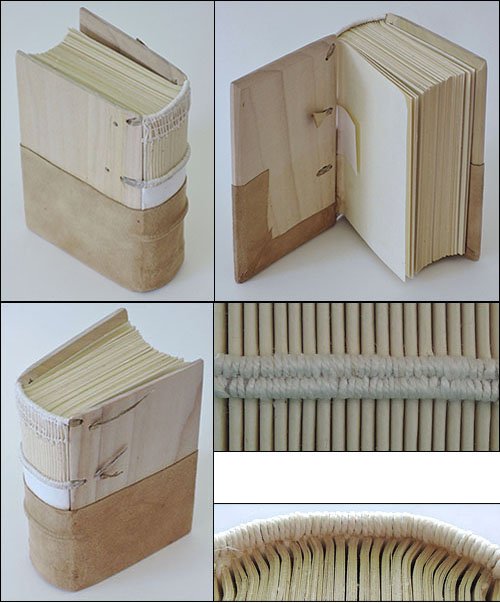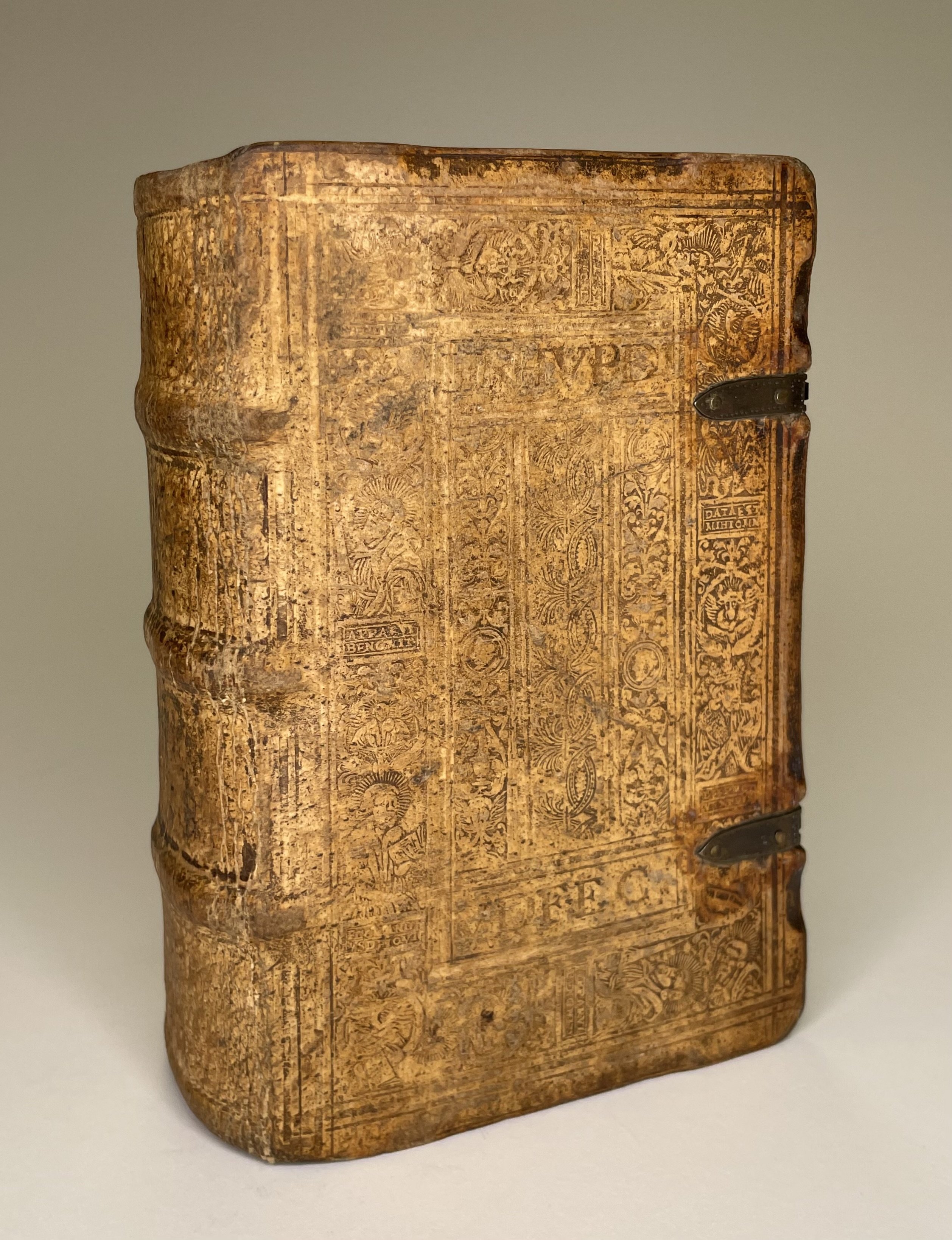Medieval and Early-Modern Binding
Chicago book artist Karen Hanmer’s model of a medieval binding structure, made in 2015, pairs neatly with a binding for a 1559 edition of Conservandae Sanitates (more commonly known as Flos medicinae, or The Flower of Medicine), a medieval didactic poem concerned with the precepts of diet, health and hygiene. The binding on the right, completed in the 1580s according to the date stamp on the binding’s verso, bears all the marks of a typically medieval structure, including a text block that is laced into wooden boards with raised headbands. In the case of Conservandae Sanitates, the boards are covered with pigskin and blind-tooled with decorative patterns and the letters “RHVPD” and “VDFEC” on the front cover and the date “158?” on the verso. This binding has the remnants of its original clasps.

A model of a typical eighteenth-century leather-over-boards binding by Chicago book artist Karen Hanmer. A cutaway at the top half of the book reveals the binding’s underlying structure of a text block laced into covered and decorated boards. This binding structure remained little changed in the West from the medieval period until the early nineteenth century, when mechanization introduced time-saving methods, such as case binding, and new materials to the binding process. Note the printers’ waste present in the spine of the model and the manuscript waste used in the bindings of much earlier books.

Frankfort: House of Chr. Egen, 1559
RA775.R28 1559 copy 2
Panel-stamped pigskin over boards; brass catches and clasps; blind tooled at top and bottom of the central panel on front cover “RHVPD” “VDFEC”; blind tooled date “158[?]” at top of the central panel on rear cover
